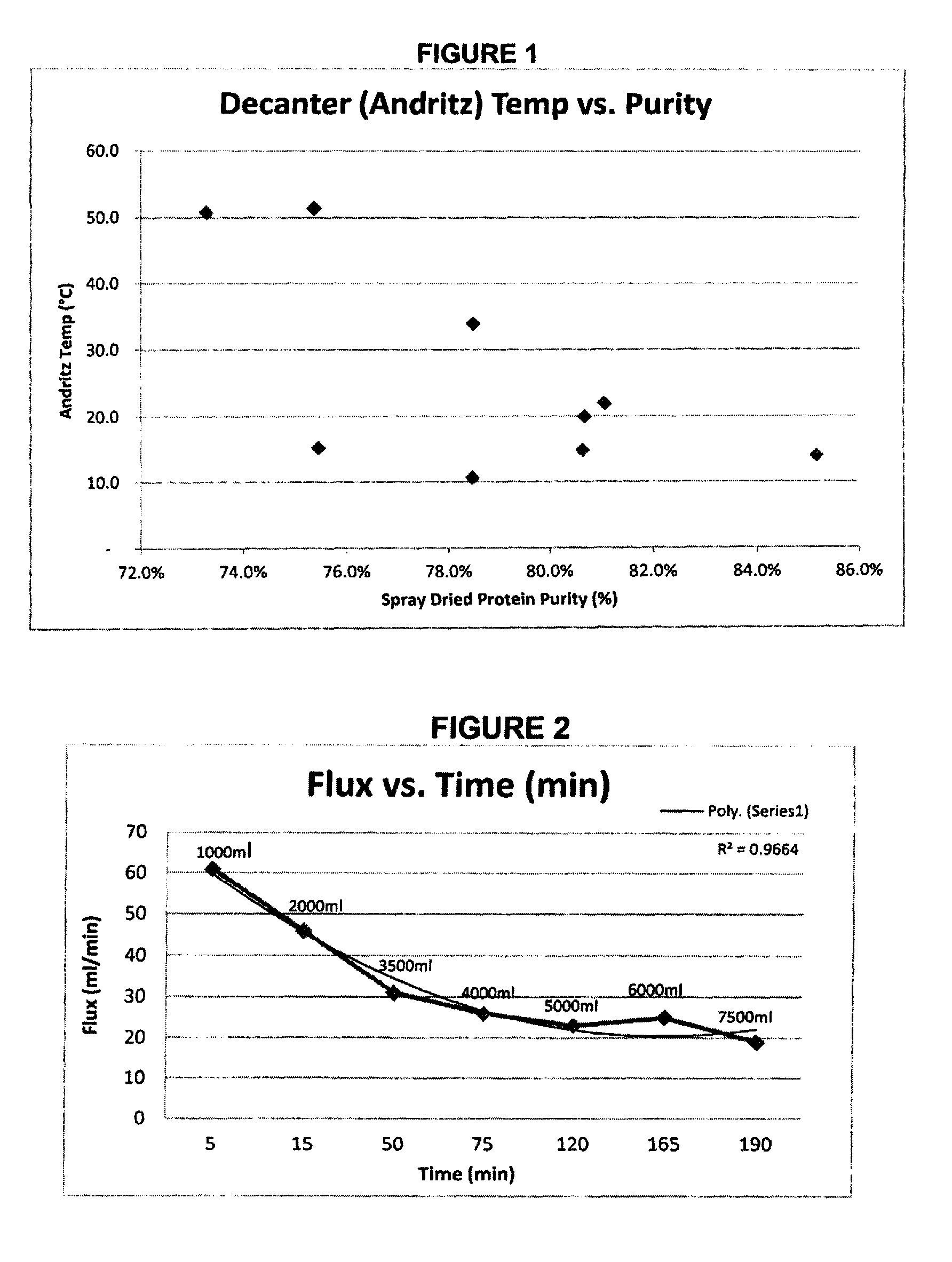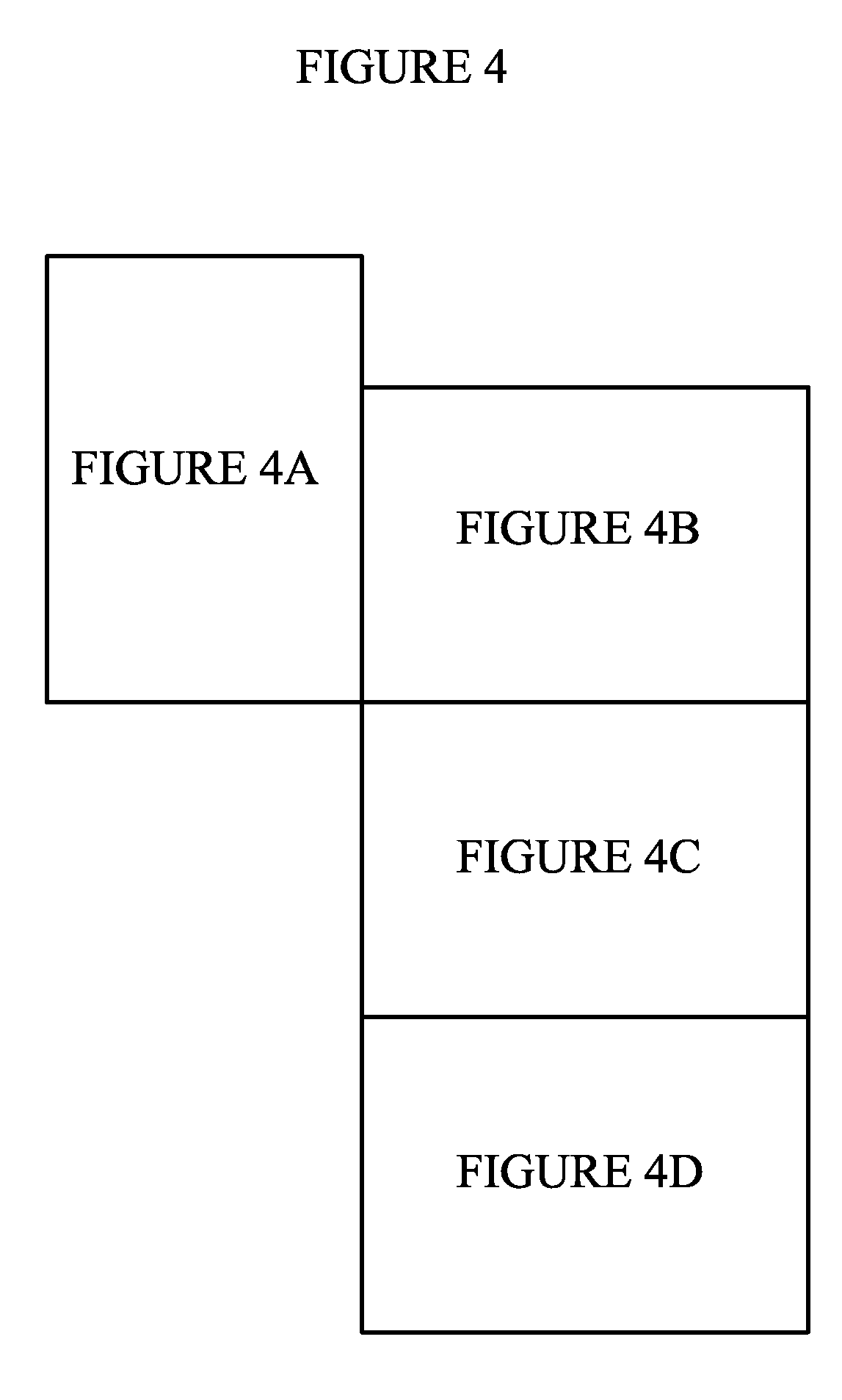Aqueous process for preparing protein isolate and hydrolyzed protein from an oilseed
a technology of hydrolyzed protein and oil seed, which is applied in the field of aqueous process for preparing soluble protein products, can solve the problems of high temperature for solvent removal, significant amount of oil remaining in meal, and use of organic solvents such as thes
- Summary
- Abstract
- Description
- Claims
- Application Information
AI Technical Summary
Benefits of technology
Problems solved by technology
Method used
Image
Examples
example 1
[0094]14% meal from the crushing process was added to water (7:1 water:meal (m / m)) and the solids decanted from the liquids. The liquid phase had a yellow, semi-solid floating phase on top of the water phase. Upon drying the entire water phase, including the floating yellow phase, 100 mL of solution provided about 5% dissolved solids containing 40-47% protein which is consistent with hexane extracted meal. The oil content of the water phase on a dry weight basis (dwb) was from 1.4%-9.4%. However, if the yellow oil phase floating on the surface is removed before drying, the oil content of the dry, dissolved solids was reduced to 0.5-0.7%. The amount of oil present in the sample is approximately 30-50 mg in 5 grams of sample. It was found that the yellow floating oil phase could be readily removed via skimming or other oil removal techniques and then the remaining supernatant could be processed through the UF to produce a protein isolate with <2% oil.
example 2
[0095]In a second evaluation 225 g of cold-pressed meal (containing 14% oil) was added to 50° C. water (8:1 water:meal (m / m) to form a slurry. The slurry was mixed, 0.6% phytase was added, and the slurry stirred for one hour. At the end of one hour, the pH was adjusted to 7 and then decanted to remove the solids. The liquid phase was further centrifuged and the oil phase was removed from the surface of the solution. The above procedure was repeated 4 times, generating 3.9 L of feed.
[0096]The decanted and skimmed water phase, was ultrafiltered using a UF system (Millipore, 10 kDa cutoff membrane). The water phase was reduced in volume to 500 mL (ca. 8× concentration) and then diafiltered 4× with 2800 mL of water (700 mL per diavolume). The UF retentate / feed was maintained at 40° C. during concentration and diafiltration. After emptying the UF lines and membrane housing, a total of 700 mL of retentate was obtained.
[0097]The retentate was cooled overnight to 2-8° C. and then spray drie...
example 3
[0120]For these evaluations, water to meal slurry of 10:1 ratio was used. The meal slurry was stirred on hot plate for approx. 1 hour at ≦52° C. to completely breakdown the meal. Table 10 shows the steps of heating, Phytase additions, hold time, pH adjustments, etc. Different quantities of Phytase were used to account for the different concentrations from each supplier. The first and second columns compare the same concentration of phytase from the two sources. The third column provides data for DSM using a different method of addition, i.e. the Phytase was added to the RO water or to the slurry and at a slightly higher temperature (≦58° C.). After digestion, the slurries were centrifuged to separate the meal fraction from the supernatant. 250 ml samples were centrifuged at 4000 rpm (2700 G) for 10 minutes using a Thermo Scientific, Model CL31 centrifuge. The supernatant was then analyzed for Phytate (Phytic acid) on an ‘as is’ liquid basis.
TABLE 10Procedure stepsBASFDSMDSM (5,000 L...
PUM
| Property | Measurement | Unit |
|---|---|---|
| temperature | aaaaa | aaaaa |
| temperature | aaaaa | aaaaa |
| temperature | aaaaa | aaaaa |
Abstract
Description
Claims
Application Information
 Login to View More
Login to View More - R&D
- Intellectual Property
- Life Sciences
- Materials
- Tech Scout
- Unparalleled Data Quality
- Higher Quality Content
- 60% Fewer Hallucinations
Browse by: Latest US Patents, China's latest patents, Technical Efficacy Thesaurus, Application Domain, Technology Topic, Popular Technical Reports.
© 2025 PatSnap. All rights reserved.Legal|Privacy policy|Modern Slavery Act Transparency Statement|Sitemap|About US| Contact US: help@patsnap.com



